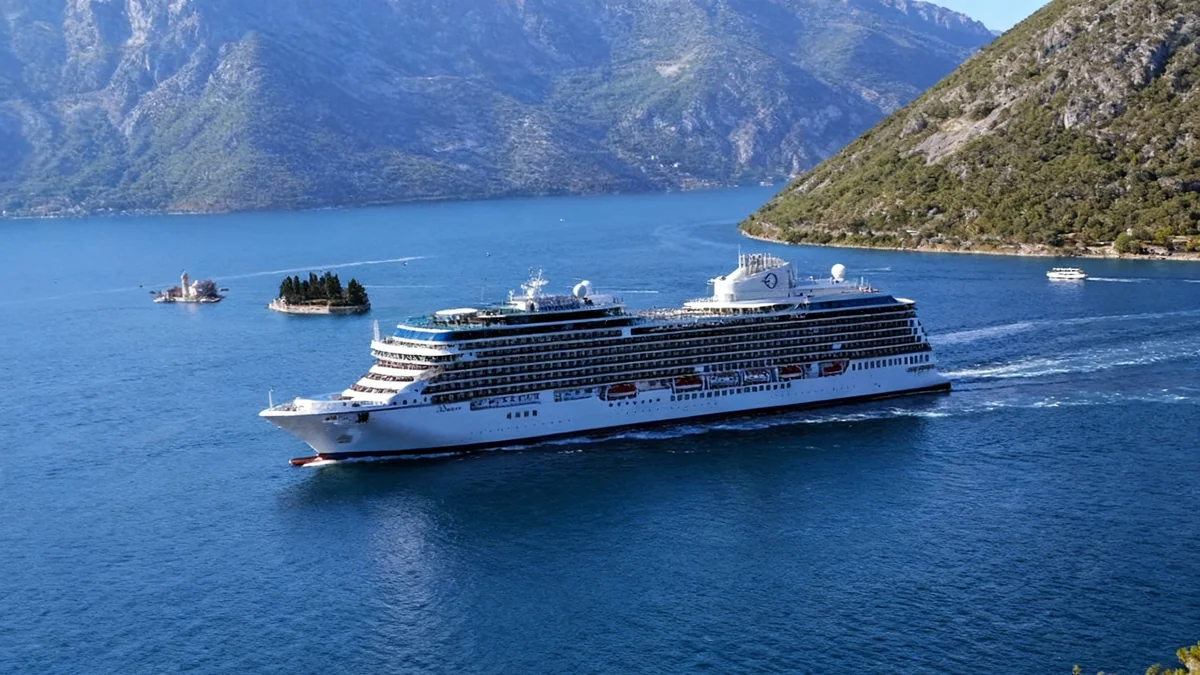Major US tourist destinations like Las Vegas and Los Angeles have experienced a significant drop in visitors this summer. This decline is largely due to fewer international travelers choosing the United States for their vacations. Experts point to global economic factors, political perceptions, and increased competition from other destinations as key reasons for this shift.
Key Takeaways
- Las Vegas saw a nearly 6% drop in passengers in August compared to last year.
- International visitors, though a smaller percentage, contribute significantly to tourism revenue.
- Political climate, economic instability, and high tariffs are deterring foreign travelers.
- Canada, the Caribbean, and Mexico are drawing tourists away from US cities.
- Cities like Las Vegas are adapting by promoting affordability and diverse attractions.
Visitor Numbers Fall in Key US Cities
Las Vegas, a popular travel hub, reported 4.56 million passengers in August. This figure represents an almost 6% decrease from August of the previous year. Data from Harry Reid International Airport shows a consistent trend: Las Vegas has been losing approximately 300,000 visitors each month throughout the current year.
California also saw a slump in tourism during the summer months. Industry projections from Visit California indicate a further decline in international visits by 9.2% for 2025. These numbers highlight a challenging period for the US tourism sector.
Tourism Data Snapshot
- Las Vegas, August: 4.56 million passengers (down nearly 6% year-over-year)
- Monthly Loss (Vegas): Approximately 300,000 visitors
- Projected Decline (California): 9.2% fewer international visits by 2025
International Travelers Opt for Other Destinations
Jukka Laitamaki, a hospitality professor at New York University and a travel business expert, explained the primary cause for this downturn. He told Daily Mail that a lack of international visitors is a major factor. According to Laitamaki, global political conditions, rising crime rates in some US cities, and economic uncertainties are making international travelers choose other countries for their trips.
"People are concerned to come to the United States because of horror stories of being detained at the airport. There's a lot of uncertainty and then this whole trade war is also impacting this thinking," Laitamaki stated.
While domestic tourism accounts for about 80% of all US tourism, international visitors often generate a much larger share of revenue in many cities. For example, Laitamaki noted that international travelers make up only 20% of New York City's visitors but contribute up to 50% of its tourism revenue. This financial impact is significant for urban economies.
Impact of Trade Policies and Global Sentiment
Visit California's projections for declining international visits in 2025 also attribute the trend to higher tariffs affecting the global economy. Additionally, negative sentiment towards the US due to its trade policies is playing a role. These factors combine to create an environment where potential international tourists may feel less inclined to visit.
Canadian visitors are particularly important for tourist-heavy cities like Las Vegas and Los Angeles. Canadians represent about a quarter of all visitors to the US. However, data from the U.S. International Trade Administration shows a considerable decrease in Canadian travel to the US. Canadian visits fell by 17.7%, from 9,914,672 last year to 8,162,134 as of June this year.
Economic and Political Factors
The global economic landscape and international political relations often influence travel patterns. Trade disputes can lead to higher costs and a less welcoming perception, impacting tourism. Travelers consider not only the cost but also the overall experience and safety of a destination.
New Destinations Attract Travelers
Many travelers, including Canadians, are finding alternatives to traditional US destinations. Laitamaki observed that those seeking natural landscapes in North America are increasingly choosing Canada. He highlighted Canada's welcoming approach to tourists as a significant draw.
For beach vacations, travelers are bypassing Miami and heading to Caribbean islands or Mexico. These destinations offer similar experiences, often at a perceived better value or with fewer concerns. Mexico, in particular, has captured a large share of these tourists.
"Visitors who want a sort of North American nature go to Canada. They welcome you. For those wanting to have a beach vacation, they don't go to Miami. They go to the Caribbean islands. Mexico has also taken a lot of those tourists," Laitamaki explained.
The rise of online gambling is also impacting traditional casino destinations. Laitamaki suggested that the convenience of digital platforms is drawing many tourists away from places like Las Vegas, which historically relied heavily on in-person gambling.
Diversification and Adaptability for Future Growth
Atlantic City, another domestic gambling destination, also faces challenges. Laitamaki believes its decline is mainly due to increased competition and a lack of diverse offerings. He noted that Atlantic City now provides services that visitors can find elsewhere, making it less appealing for the money.
Tourists today seek novel experiences and value for their money. Laitamaki emphasizes that adaptability, diversification, and ensuring a worthwhile vacation are crucial for cities to maintain popularity. He remains optimistic about Las Vegas's ability to recover.
Las Vegas tourism authorities are actively running campaigns to counter the perception of high costs. These campaigns emphasize the availability of affordable hotels and dining options, such as buffets. The goal is to show travelers that a trip to Las Vegas can still be budget-friendly.
Strategies for Revival
- Affordability Campaigns: Las Vegas promotes economical hotel and dining options.
- Diversified Attractions: Highlighting sporting events, shows, and resorts beyond gambling.
- Post-Disaster Recovery: Marketing efforts to encourage tourism after natural events.
Beyond Gambling: A New Vision for Vegas
Tourism marketers in Las Vegas are working to broaden the city's appeal. They are highlighting diverse attractions beyond gambling, such as major sporting events, live shows, and luxury resorts. This strategy aims to draw a wider range of visitors looking for various entertainment options.
Laitamaki predicts that these efforts could lead to a quick rebound in visitor numbers for Las Vegas. He emphasized the cyclical nature of the tourism industry and its resilience, even in the face of economic downturns or environmental events.
"What I see now is people had a perception that it's becoming expensive so Las Vegas [tourism authority] is running campaigns where it is emphasizing that you can find affordable hotels and affordable buffets. There is a cycle which is an economic cycle, but there are also these drastic [environmental] things. But it is an industry that always comes back," Laitamaki added.
Natural disasters, such as wildfires, have contributed to tourism declines in places like Los Angeles. However, many popular destinations have successfully recovered from such events through effective marketing strategies. Tourism revenue can be vital for cities rebuilding after drastic events, with marketers encouraging visitors to indirectly support recovery efforts.
New Orleans serves as an example, having rebuilt after Hurricane Katrina partly due to returning tourists, according to Laitamaki. He also pointed out that cities like New York City, London, and Paris are "Bucket List" destinations that consistently attract visitors due to their iconic status and ongoing evolution.
New York City, in particular, maintains its appeal through creative programming and novel experiences, even during off-peak seasons. This constant innovation helps such cities stay relevant and popular regardless of global shifts.
The US tourism industry faces an estimated loss of $12.5 billion in international tourism dollars this year. The World Travel & Tourism Council projects international visitor spending in America to fall to just under $169 billion this year, down from $181 billion in 2024. Despite these challenges, Laitamaki remains confident in the industry's long-term resilience.





